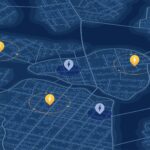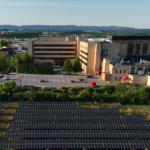NGA defines resilience as the ability to withstand disasters better, respond and recover more quickly, and excel under new conditions.
Governors increasingly face a host of human and natural disasters that threaten the viability of energy, water, transportation and other infrastructure assets that are critical to our way of life. Those disasters include severe storms, wildfires, droughts, inland flooding as well as diverse terrorism and cyber threats and chronic stressors such as poverty, disease, hunger, and violence. The impacts of these threats can be measured economically.
Incorporating resilience into emergency planning, infrastructure systems, and the built environment presents the opportunity to reduce vulnerabilities to future threats, mitigate the impacts of disasters, and lower the cost and effort needed to respond to and recover from disasters.
Resources

Governors are committed to partnering with FEMA to modernize and strengthen our national disaster response system; however, meaningful reform must start with collaboration and transparency. Submitted via email to: FEMAreviewcouncil@hq.dhs.gov ...

This paper is part of a series published by the National Governors Association (NGA) to identify actions Governors can take to guide their states and territories through intentional and effective ...

Strategies for Governors to address the needs of certain vulnerable individuals during energy emergencies (Download) As states and territories face an increasing range of threats that could compromise energy reliability, ...

Every aspect of modern life depends on a reliable, affordable supply of energy. Energy powers our telecommunications networks, fuels our vehicles, and keeps the lights on and equipment working at ...

The National Governors Association (NGA) held the 2023 Governors’ Advisors Energy Policy Institute in Providence, Rhode Island, August 1-3. This annual Energy Policy Institute convened Governors’ energy policy staff from ...

At the 2023 NGA Annual Meeting, Connecticut Governor Ned Lamont and Vermont Governor Phil Scott, Co-Chairs of the Public Health and Disaster Response Task Force, hosted a policy discussion on ...

From May 16 to 18, 2023, NGA hosted its Quarterly Infrastructure Coordinator Workshop in Washington D.C. With $37 billion in funding for resilience programs in the Infrastructure Investment and Jobs ...

This paper contains best practices to best position healthcare facilities when energy stressor events occur, prioritizing healthcare facility energy resilience. (Download) Introduction Over the past several years, the National Governors ...

At the 2023 NGA Winter Meeting, Connecticut Governor Ned Lamont and Vermont Governor Phil Scott, Co-chairs of the Public Health and Disaster Response Task Force, hosted a discussion on how ...

Governors' staff and state leaders across the country collaborate and recognize the importance of resilient energy and critical infrastructure, while discussing how to best bolster state energy plans with new ...






















